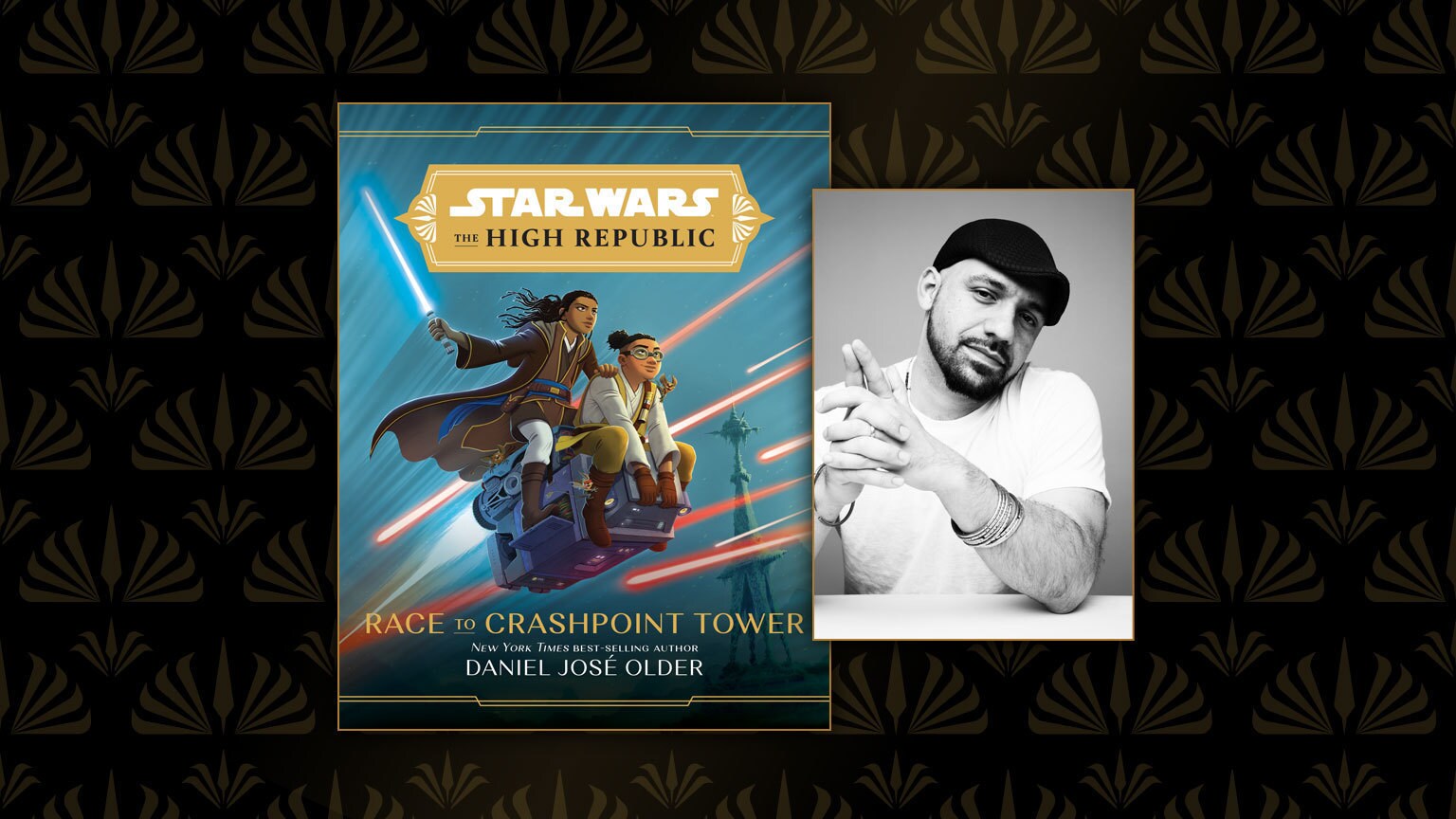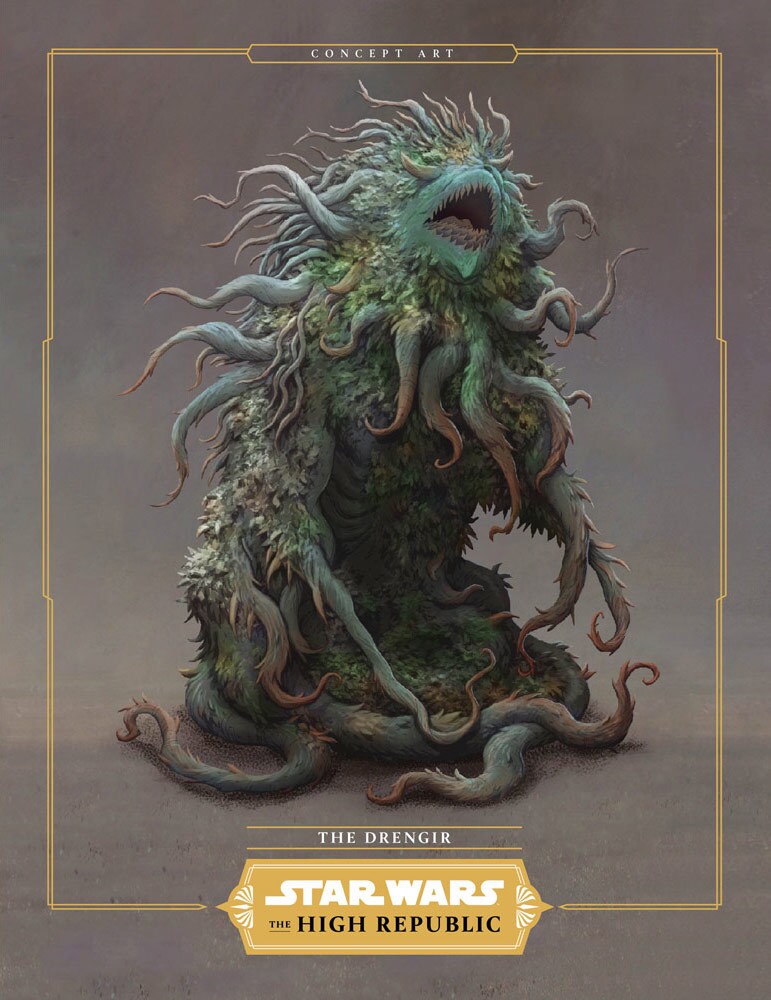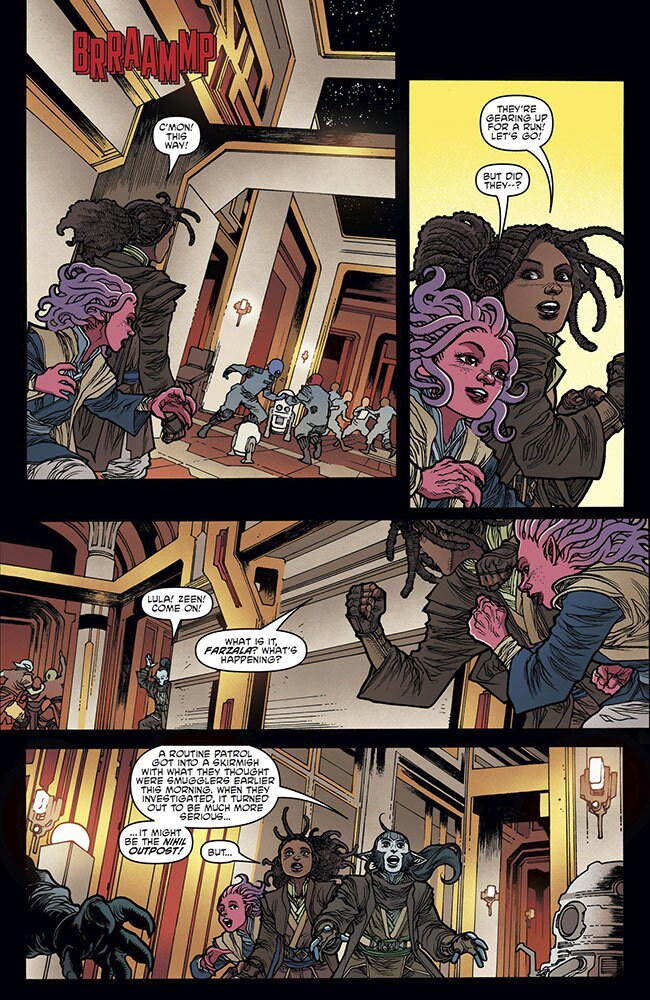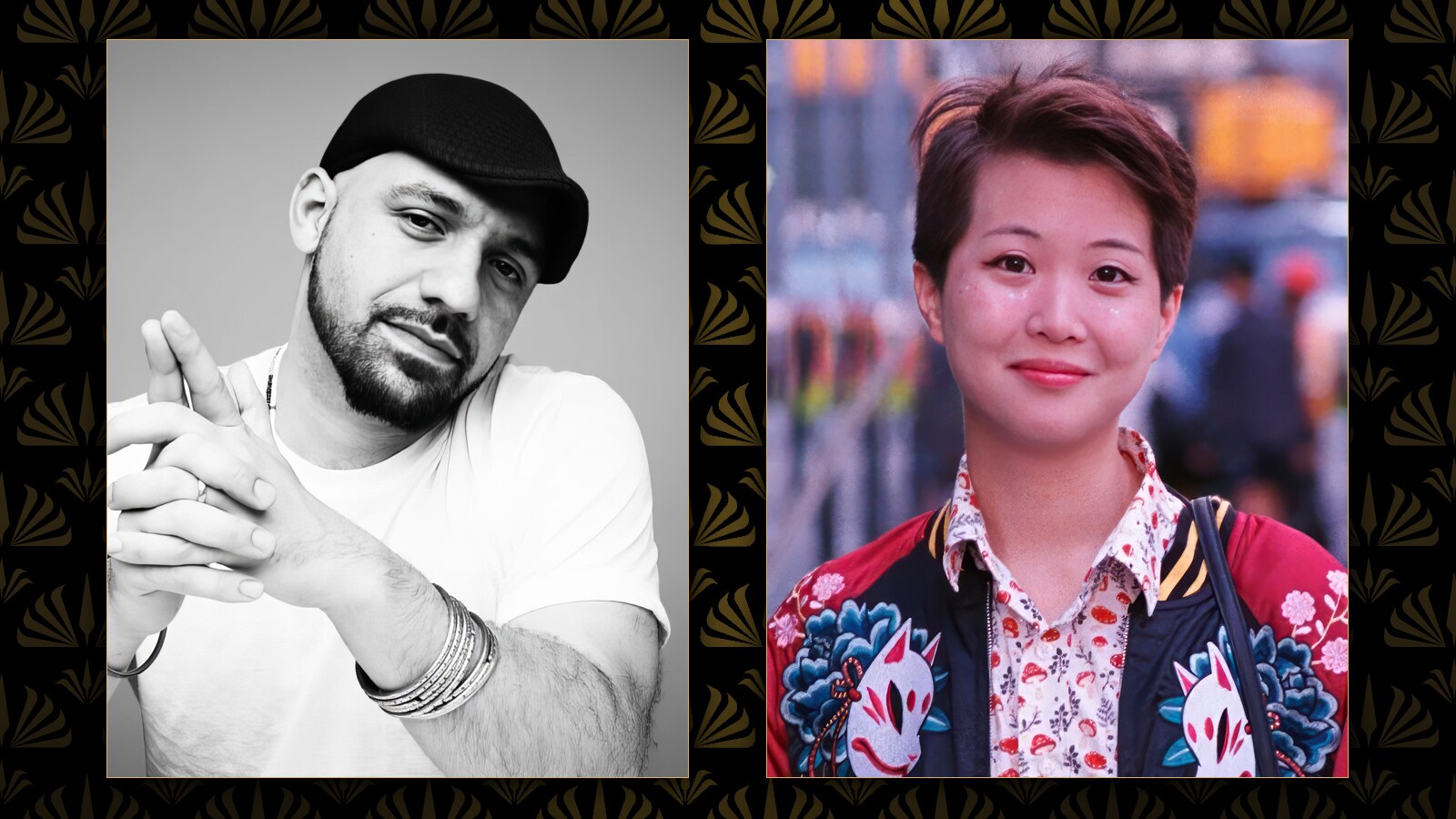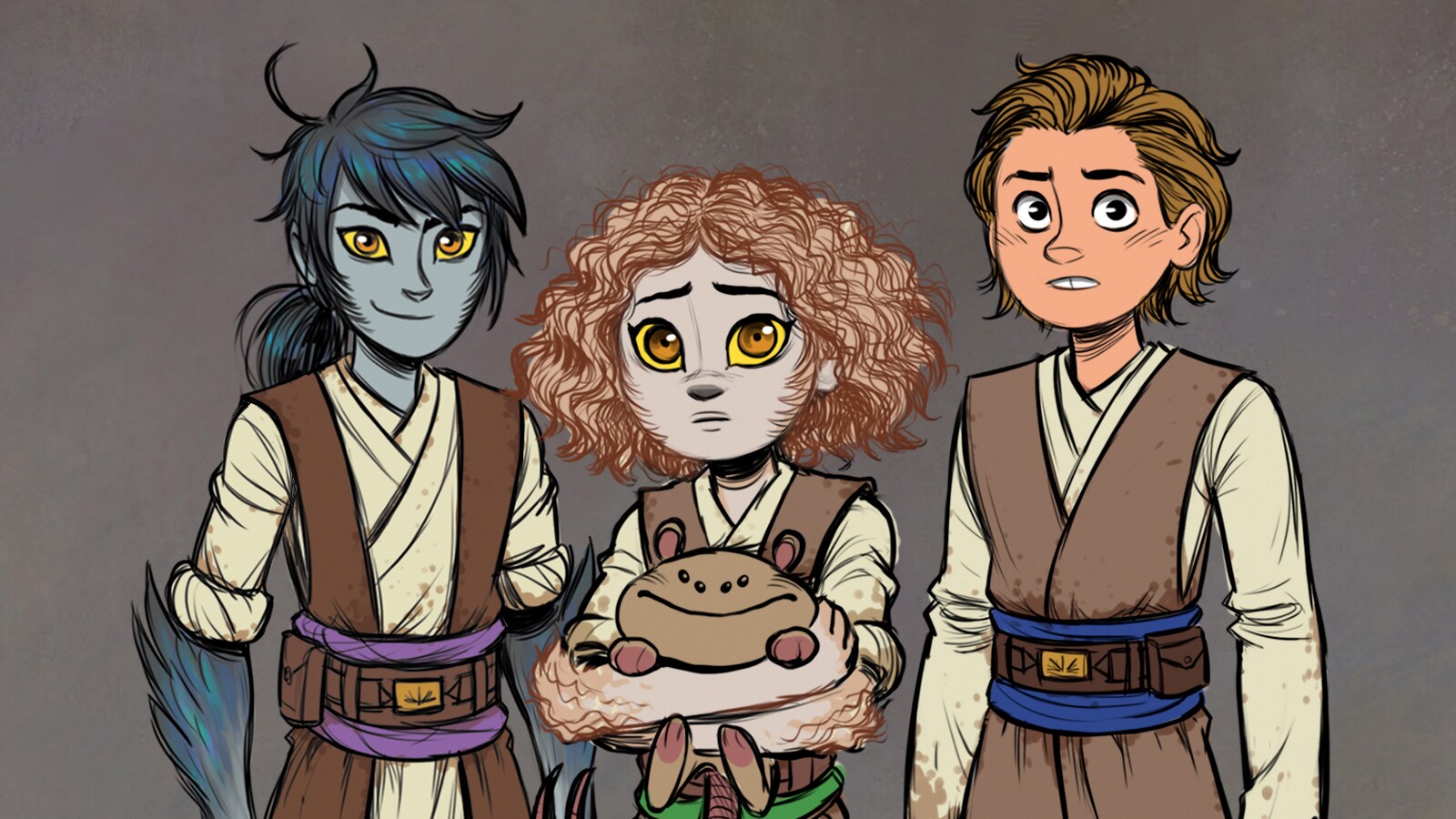The Republic Fair is in danger and it hasn’t even opened yet! And it’s up to a Jedi Padawan, his trusty droid, and a few friends to hold the line. This week, the story of Star Wars: The High Republic continues with the release of Race to Crashpoint Tower, the new middle grade book by veteran Star Wars author Daniel José Older.
For those keeping current with The High Republic Adventures comic, also written by Older, Race to Crashpoint Tower takes place after issue #5, and concurrently with issues #6 and #7.
Recently, StarWars.com called up the New York Times bestselling author to get the lowdown on Ram Jomaram, his friends, his foes, and the adventure of writing in era of the High Republic.
StarWars.com: Tell us a bit about the main character of our story, Ram Jomaram, and the world he lives in.
Daniel José Older: Ram is a Jedi who really enjoys mechanics and being in a garage and tinkering with things, and seeing how they work and breaking them and fixing them again. His best friends are some furry creatures called the Bonbraks, and he has a droid named V-18, who looks enough like a crate that they had to paint him purple to stop him from getting accidentally shipped off as a crate. Basically they all just have a good time hanging out in the garage. Ram doesn’t really like combat -- but who does? Some people, if we’re being honest. But he’s not interested in being a great lightsaber fighter, or in any of the pomp and circumstance of Jedi-ness. All of this is just not where he’s at.
Valo is a very off-to-the-side world. It’s pretty, and has a very happening culture, but it’s never been the center of attention of the whole galaxy the way it is when the Republic Fair happens. That’s a change for Ram who doesn’t like to be in the spotlight at all.
StarWars.com: We’ve been building up to this event, the Republic Fair, in the same way that an earlier phase of The High Republic built up to the opening of Starlight Beacon…
Daniel José Older: It’s part of Chancellor Lina Soh’s Great Works program, where she’s trying to bring the galaxy together. It really is a high time for the Republic. They’re doing lots of great things. They’re expanding in a good way, not in a conquest way. The Republic is a very inclusive society and they are bringing in lots of worlds. This means that they are putting infrastructure together, and getting to celebrate all the different worlds they have, and all of the great things that it entails, to be part of the galactic Republic. The fair is really a way of celebrating all of that. It’s a way to champion of the new planets coming in, as well as the Core Worlds, giving everyone a chance to be around each other and mingle and enjoy the sights. Different planets have different exhibits set up, and there’s a lot of culture on display. It’s a really exciting time for the Republic.
StarWars.com: That sounds like a lot of fun.
Daniel José Older: Definitely, definitely.
StarWars.com: The bad guys in The High Republic are the Nihil and the Drengir. What is it like to put those two together?
Daniel José Older: It’s a lot of fun. They are two very different types of bad guys. They’re both chaotic but in very different ways. The Nihil are ruthless. They travel in packs and have a very specific attack pattern. They aim for soft targets. There’s a brutality to them. The Drengir are…I want to say “otherworldly” although that might not make sense for the galaxy far, far away. They are rooted in a very dark, dark side of the Force.
StarWars.com: I see what you did there with “rooted.”
Daniel José Older: Ha! I didn’t even mean to do that, but there it is. They have a hive mind and, here I go again, have different “branches” of them and how they function. They’re a bit like wild beasts – they are sentient, but they are also driven by…. hunger [Laughs] and decided to just eat meat, like some of us. They have a different vibe, a different approach, different wants and needs. It’s always good to have complexity of antagonists. It allows them to play off each other and see what you get.
StarWars.com: Speaking of bringing people together, you bring Zeen Mrala and Lula Talisola over from the Adventures comic. What is it like bringing them to the written page?
Daniel José Older: It’s a lot of fun. I really like that aspect of it. In particular, the larger project of The High Republic allows us to bring in characters that other writers wrote, like the crew of the Vessel, into the comics or the other way around, bringing characters from the comics into the novels I’m writing. It’s very exciting and fun. It lets us explore characters from a lot of different perspectives. I think there are a lot of things you can do with prose that you can’t necessarily do with comics, and vice versa. That adds up to a very thorough and in-depth approach to character building and it’s fun. And we’ll see Ram in the comics moving forward, which is a lot of fun. There’s a lot of interplay and we get to see the characters from lots of point of view, which is what Star Wars is all about.
StarWars.com: One of the neat things about The High Republic is that we see lots of points of view within the Jedi Order and how they see the Force and their own path. Ram sees things very mechanically and uses that, while Zeen is a newcomer to the Force but is not a Jedi. What is it like to play with these different aspects of the Force?
Daniel José Older: These kids have grown up in a time of peace, even if they don’t live in it at the moment. This allows them to really explore the Force in a way that the Jedi we are more familiar with, who all lived during extreme war times, aren’t able to do. We see Jedi like Avar Kriss who experience the Force as music. The interconnectedness of people -- the Jedi think of it like water. All of those beautiful metaphors, they really do speak to the Force itself, but also the golden era of galactic history that really signifies The High Republic. It’s a lot of fun and interesting for a writer to explore those points of view of different Jedi and non-Jedi Force users, and put them into conversation with each other. There’s so much beauty and complexity and challenging material to deal with when thinking about the Order and the protocols and how different personalities manage those different lifestyle choices required of being a Jedi. It’s fascinating. I’m really enjoying putting my characters into the mix of that, into the conversation of that, and watching them struggle with it and seeing where they come out, and all the different possible paths that that leads to.
StarWars.com: One of fan-favorite characters that came out of Justina Ireland’s book, A Test of Courage, was Vernestra Rwoh. What was it like getting into her head?
Daniel José Older: Very cool. She’s such an interesting character and to pair her up with someone like Lula, who is also very young but ahead of her age in a lot of ways. Lula is pretty ambitious, in terms of what she wants for herself as a Jedi. How does that relationship work when meeting someone else who is young and really accomplished? Also exploring that friendship and what they have to learn from each other.
StarWars.com: We also see the deepening friendship between Lula and Zeen as they head back to Trymat IV, where Zeen is from. What is going back home like for her?
Daniel José Older: I think it’s heartbreaking. She moved around a lot as a kid, but Trymat is the closest place to a home for her and it’s gotten completely disrupted. The entire ecosystem has been basically destroyed by the Emergence as part of the Great Disaster. It’s gone from a lush tropical paradise to an absolute barren wasteland. And it’s heartbreaking. She doesn’t exactly have roots there but it’s never easy to see that happen for a place she called home.
StarWars.com: It’s definitely a completely different world. Changing tracks, let’s talk about the relationship with Ram and V-18 -- we have the droid and the Jedi mechanic. What’s their connection on a deeper level?
Daniel José Older: They have an understanding, and with the Bonbraks, too. They all enjoy the lifestyle that Ram has cultivated, playing with mechanics and toys. Not actual toys, but speeder bikes and engines and such. They all have an understanding of how that stuff works. V-18 is very protocol-driven. He’s not a protocol droid, but like most droids, he follows a certain regimen of what he’s supposed to do, but he’s also a fun-loving droid. When it comes to certain enhancements in order to get things done, he’s down for it. A little hesitant at first, but then it’s a little fun, so he ends up going along with it
StarWars.com: Like when he first gets presented with some upgrades, his protocol sense says “That’s a bad idea.” But when he thinks about it, he’s “No, I really want that.”
Daniel José Older: And the Bonbraks have been waiting their whole lives to do it. All Ram has to say is go, and they’re all ready. [Laughs] Which is great, because they have a team.
StarWars.com: This story deals mostly with the Padawan-aged kids. Vern is a knight and she’d probably kill me for calling her Vern, but everyone else is a Padawan. What is it like having Padawans go on an adventure when the knights and masters aren’t there?
Daniel José Older: I think an important part of telling stories for young people is that you really have to let the young people lead the story and draw the story. Of course, there are moments when the characters who are adults are about, but the really important people and the people who are the focus of the book are always the young people. It’s great to have the opportunities like the conversations with Vernestra, Kantam Sy, and Buckets [of Blood] in the Adventures comics, to have guidance or to be mentors -- and sometimes flawed mentors. But the story is about young people. It’s important to get them away from the adults for the majority of the book, to get them to have their adventures, make their decisions themselves, and really step up into their roles.
StarWars.com: Definitely. It’s important to let these characters grow into their future selves by having these adventures. We also come across another interesting Force user later in the book …
Daniel José Older: Ty Yorrick? I love Ty! She’s such an interesting and fun character. She really comes out of Cavan Scott’s novel, The Rising Storm. I think she’s such an interesting “bad” person to compare to the Jedi. We’ll see her a lot in The Rising Storm and how she relates to different Jedi. It’s a complex relationship and there’s a lot to explore with that. In particular, with Lula, who would wonder why someone would not want to be a part of the Order if they’re a Force user. The Jedi Order is the best thing to ever have happened to Lula. She’s trying to wrap her head around being -- not like Zeen who has been repressing her Force use her whole life -- an active Force user out in the galaxy, as a saber for hire. It transforms Lula’s whole understanding of what you can do with the Force. Looking at Ty, it’s very revelatory.
StarWars.com: One of the things that is always part of Star Wars is humor, and I think we talked about it last time when we were discussing Last Shot. How did you try to infuse humor here? There is a great scene where Ram is trying to use the Force on a Neimoidian…
Daniel José Older: Oh, I have so much fun doing it! One of my favorite parts about Star Wars and one of my favorite parts about life is that funny moments will creep up in the story. I didn’t know that moment would be funny until I got there. “Oh, he should try doing a little Force powers on his mind, and it will go terribly.” It’s actually a hard skill to master and Ram is not about that life anyway. He’s just trying to tweak some engines. I love the idea of being a Jedi but bad at something. Also, it’s good to see that, particularly with trying to do the mind work and failing. But not utterly failing. Almost failing and seeing how bad it could possibly go. A rule I follow is: If it makes me chuckle when I’m writing it, it’s gonna make a reader laugh. That’s the going strategy. So whether it’s comics or prose, I just try to make myself laugh.
I was talking recently online about how there’s this line I can’t say without laughing. When Ty zaps a Mon Calamari character and says, “Sweet dreams, sweet seafood.” It’s so random and weird and halfway noir and halfway just ridiculous. It cracked me up as I wrote it, and later on it cracked me up when I was going through edits to the book. I could not believe that A: I wrote it, and B: they let me keep it, and C: that it makes any sense at all. I’m just trying to make myself laugh -- that’s all I can do.
StarWars.com: I think there’s lots of Star Wars authors who say to themselves, “I can’t believe they let me keep it.” What is it like working, not just on your own, but with other Star Wars writers on this team for The High Republic?
Daniel José Older: It’s really fun. It’s challenging but it is fun -- a dream project in a lot of ways. I really love the collaborative aspect in general. In comics, for instance, there’s working with artists and working with colorists. It’s very interesting and different to do it with writers. Basically, when it comes to characters and different people come up with them and play with them. You’re always doing that in Star Wars. By its very nature, you’re playing with someone else’s tools in someone else’s sandbox. But in this situation, we’re doing a lot more in creating the sandbox and creating the tools, but also we’re a lot more in intimate in collaboration with each other. A lot of times when you write Star Wars, you’re writing a character or a scenario or a planet that was created forty years ago or thirty years ago. That’s very different than when you’ve got someone coming up with characters a couple months ago, when you were coming up with your characters. You can call them and talk about what might happen. I think we take full advantage of that. We collaborate and connect all the dots we can.
StarWars.com: So how does that work? Do you all just call dibs?
Daniel José Older: Like with the Vessel [crew], I’ll just jump on the [authors’ group] Slack, and see what they are doing at this point. It’s like having kids and seeing if they can play together. You call up the parents and ask if they are available on a particular date in galactic history, and Claudia [Gray] will be like, “Nope, they’re not doing anything.” It’s all very informal. Because we are all responsible for the larger story, we do have to check in with each other. For the scripts for the comics issues that I do, I’ll send them over to Claudia and ask if I did her characters right, and she’ll say absolutely. Sometimes for a character like Geode -- Geode is a complicated character to write. He’s a rock. It’s complicated! You have to figure out how other characters will play off him. But I’ve been wanting to have Qort from IDW Adventures and Geode hang out ever since I read Into the Dark. I was really happy to have the chance to have them in the same room together.
StarWars.com: Are there any characters or other stuff you wish you could have done more with in Race to Crashpoint Tower?
Daniel José Older: No, I loved what happened. There’s a lot more stuff happening. You don’t have to fit it all into one thing, which is what is so great about this. When I did Last Shot, I didn’t know if I was going to write another Star Wars ever, so it was a different vibe than being part of this ongoing initiative, where there are ongoing comics and more stuff ahead. I try to spread it out.
StarWars.com: One of the things that you brought into Last Shot and Race to Crashpoint Tower here is that you manage to keep things creepy, with your Drengir here and the giant Nihil spider ship in the comic and the Brotherhood of Wire and Bone. Why do you bring that horror aspect to Star Wars?
Daniel José Older: I think it’s always been there. It’s just a matter of leaning into it sometimes. There are always shadows in Star Wars in different ways. There’s always moments that make us uncomfortable and uncertain and they are supposed to be there. They make the light parts even lighter, with that contrast. Just wait until you see what’s coming next.
StarWars.com: Oooh! I will look forward to that. And hopefully we’ll get to chat some more at that point. Is there any more you’d like to share?
Daniel José Older: I’d say that connectivity is one of the key pieces of The High Republic that we’ve all enjoyed making and a lot of people have enjoyed reading so far. And this is only the beginning. [Laughs] As we move forward, the connectivity heightens. There are so many threads that are woven in that I don’t think people realize how important they are that will rise in prominence as we move forward. There’s so much great stuff ahead and I am really excited about it.
Star Wars: The High Republic: Race to Crashpoint Tower is available now in hardcover and ebook.
Visit Lucasfilm’s official hub for all things Star Wars: The High Republic at StarWars.com/TheHighRepublic.




